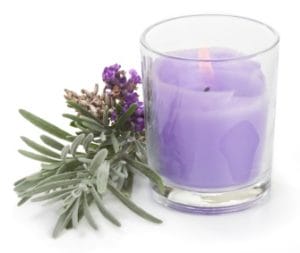How well do you know allergy and asthma culprits? Allergic Living roots out where allergy triggers hide – and helps your household to reduce the sneezing and wheezing. [Updated: January 2023]
 1. Mite-y Plush Toys
1. Mite-y Plush Toys
Sure you encased the mattresses in barrier bedding, but then you tucked little junior in with that cute stuffed lion (aka the dust mite colony). Those snuggly animals are a magnet for mites. So a great place for a key allergy trigger to hide.
To eradicate the allergen army, you can wash stuffed animals in hot water, followed by a high temperature dry, but that may cause the toys to lose their fluff.
A good alternative? Freeze the toys in a plastic bag for 24 hours; freezing also kills dust mites. You can then wash them on the gentle cycle with warm or cold water, and let them air fluff in the dryer.
2. Hot Houses
Dry sinuses and cold-induced asthma may prompt you to hibernate, but Dr. Schenkel, director of Valley Allergy and Asthma Treatment Center in Bethlehem Township, Pennsylvania, advises his patients not to sweat it. “Dust mites are non-existent in areas of low humidity. But everywhere else in the country, you close the house up, crank the heat, and dust mite levels go really high. They thrive if the humidity is above 50 percent in your house, as does mold.” For more information on dust mites allergy see this article.
You can purchase a hygrometer to monitor indoor humidity. If you’re harboring a tropical climate, consider a dehumidifier to keep the moisture levels below 35 percent during the frosty months and 50 percent for the remainder of the year. As for asthma symptoms to cold air, the good doctor says to “bundle up and stay hydrated.”
3. Inflamed Fragrances
Scented candles add ambiance to our homes, but comforting aroma comes at an irritating price. Candles, air fresheners, and even incense can emit volatile organic compounds (VOCs) into the air that increase asthma risk and can elicit eye, skin, and nasal inflammation.
In a study published in the Journal of Environmental Health, 19 percent of the participants reported having breathing difficulties or other health issues when exposed to air fresheners.
To limit your VOC exposure, try other types of mood lighting and natural home fragrances, like fresh baked cookies and allergy-friendly plants. For clean-air plants, see this article.
4. Too Cool Laundry
Some washing machines have heat settings that can be adjusted manually, but others feed the water straight from the pipes. If you need to turn up your hot water heater for a sanitizing clean, do use caution if you have young children. A temperature that high can scald little hands.
You’re washing the sheets regularly in hot water, but the sniffling still ensues when your head hits the pillow. Question: Is the water actually hot? In a South Korean study, cotton sheets that were laundered at a standard 104 degrees F only shed 6.5 percent of their dust mites. However, a wash at 140 degrees F killed off 100 percent of the mites.
 5. Fishy Friends
5. Fishy Friends
Fish may seem like allergy-friendly pets, but without sufficient upkeep, Nemo can become a symptom trigger. Mold grows on various parts of fish tanks or bowls, and on areas outside of the tank that remain damp, including the underside of the lid. Scattered fish food can also encourage mold on your furniture or flooring and help to nourish a dust mite colony.
To keep mold at bay, dry off above-water tank parts daily, and periodically give the tank or bowl and all its decorations a thorough cleaning. Filter media should be changed once a month to prevent mold growth and to keep fresh oxygen flowing. When you feed the fish, immediately clean up any flakes that miss the tank.
6. Dry-Cleaning
Those dry-clean only labels are not only a pain to your pocketbook, they can introduce chemicals like perchloroethylene (or PERC), a VOC, into your home. The solvents used in dry-cleaning can off-gas for weeks, triggering respiratory irritation, not to mention headaches or dizziness.
Avoid taking your health to the cleaners by purchasing fabrics that can be machine or hand washed. If professional help is a must, hang dry-cleaning outside for a few days of fresh air or better yet, seek out “green” cleaners who use processes that avoid harmful chemicals. For more information and tips on how to keep your home allergy free see this article.
 7. Plants: Soil Can Hide Allergy Trigger
7. Plants: Soil Can Hide Allergy Trigger
If you think the philodendron is setting off your sneeze attacks, think again. Indoor foliage is rarely allergenic, but the soil in over half of all houseplants is a breeding ground for mold.
To prevent mold, start by replanting your greens in sterile soil. Avoid over-watering, and allow the top inch of the soil to dry out before re-wetting. Keep the plant in a sunny location and tidy up dead leaves. Finally, cover the plant soil with a layer of rocks. You’ll look like a home decor diva and the barrier will help to block the release of spores. If you do spot mold, zap it with a solution of equal parts vinegar and water.
8. Gas Stove Cooking
When it comes to kitchen ranges, the gas vs. electric war rages on. But for asthma sufferers, electric is the mitts down winner. Gas stoves emit nitrogen dioxide, a potent and sneaky asthma trigger.
Tests have shown that even if a bedroom is away from the kitchen and on a different floor, levels of nitrogen dioxide from a gas stove were high enough to trigger asthma attacks. A 2023 study even links the stoves with the onset of many cases of childhood asthma.
But you’re not entirely off the hook with electric. Steam from cooking can reach ceilings and the tops of cabinets – another place for an allergy trigger to hide. This moisture creates a breeding ground for mold. Ensure that you have a powerful stove exhaust fan to vent both nitrogen dioxide and steam, and use it!
 9. Faux Christmas Trees
9. Faux Christmas Trees
As Christmas time arrives, so does the perennial debate about which is worse for allergies, the real or the fake tree.
Dr. Schenkel cuts down the myth that pollen-producers are always to blame. “I find more problems develop with artificial trees because they have been kept up in an attic filled with dust, and that bothers people more.”
He says pine pollen is not as allergenic as most people think, although fresh-cut trees can introduce mold into the house. To minimize the spores, shake out the live tree or blast it outside with a leaf blower. Keep its stay in your home to a minimum; one study suggests a maximum of seven days for those sensitive to mold. For more advice on Christmas tree reactions see Dr. Watson’s advice here.
Related Reading:
How to Defeat Dust Mites
Formaldehyde: the VOC lurking in Flooring, Furniture





